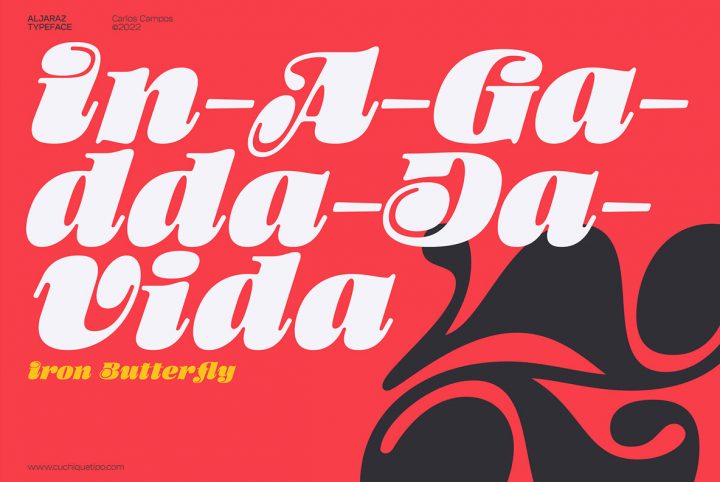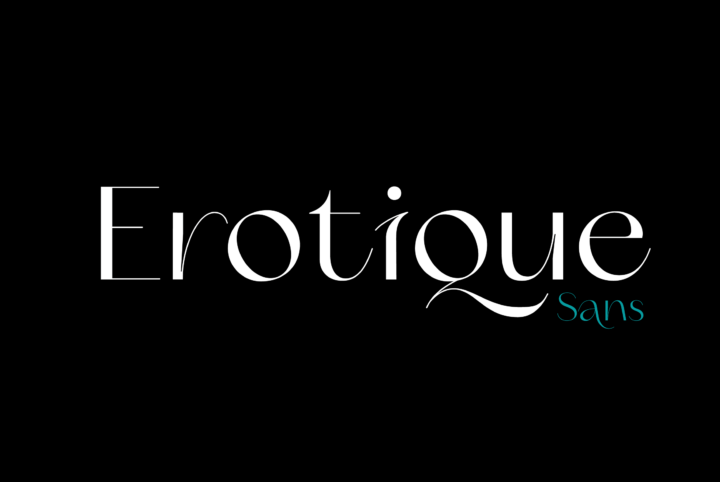Mikolaj Grabowski will help you take charge of everything. And when you become too oppressive, he will help you tear it all down. He will disabuse you of that pesky little notion called freewill, but when the day comes when you start to suspect the “freedom” inherent in obedience might not actually be freedom…he will be with you in midnight streets throwing rocks at streetlights, spray-painting new manifestos, renaming squares a thousand times over. Free expression and repression. Putting up walls and breaking down barriers. Replacing the old with the new, only to find the new always gets old.
Font-bud’s Grabowski knows these dualities, and they inform his process. Formerly known as Epilepsja, he now calls the font Achtung: he has added lowercase and small caps, and additional language support including Cyrillic and some dingbats.
The result is an artistic reflection of his milieu. Hailing from Poland, Grabowski is a typographer, painter, photographer, and performer. As such, he knows what it means to exist between extremes, between conflicting empires, armies, and ideologies. The never-ending friction on this cultural and political fault-line has produced an artistic legacy born of conflict and extremes: Adam Mickiewicz, Tadeusz Konwicki, Bruno Schulz, Stanislaw Ignacy Witkiewicz…to name just a few from a long list of brilliant Polish artists.
Stanislaw Witkiewiez, aka Witkacy, perhaps offers the most dramatic personification of an artist emerging from Poland’s tumultuous, conflicted story. Witkacy was a brilliant painter and writer. His paintings contained codes indicating what drugs he had taken while creating them, and he sold them based on an elaborate scale where different “types” had different prices and motivations. For instance, Type A paintings were the most expensive and beautified the client, while Type C were free and only offered to friends. Type C portraits were painted under the influence of varied substances, and were abstract and bizarre.
But Witkacy is most widely known for his eerily predictive novel Insatiability. Written in 1927, Insatiability is set in the future. It tells the story of an invading eastern army that enslaves Poland. The conquered are given a pill called DAVAMESK B 2 which induces a serene state and total obedience to the new leader Murti Bing. At peace and free from independent thought, people obsess over sex while happily submitting to the new regime.
Sadly, the dystopia predicted in Insatiability came much sooner. On September 5th, 1939, Witkacy and his girlfriend Czeslawa Okninska fled to eastern Poland to escape the invading German Army. They arrived in the village of Jeziory, only to hear news of the Red Army’s invasion from the east. On September 18th, the couple tried to take their own lives via drug overdose. Witkacy succeeded, supplementing the drugs by slitting his wrists. Okninska survived.
Although Witkacy’s biography stands out, the forces that informed his art and his story almost inevitably color the Polish psyche and Poland’s artists. Regarding the font Achtung, Grabowski states that its range of applications includes everything from “warnings and safety signage to propaganda posters and anarchist graffiti. Every place where you need an indisputable message, but it in headlines or titles, this font comes in handy. It’s a stencil, it’s layered, and impossibly dimensional.”
The dissonance is indeed there in this fierce font that lends itself both to propaganda posters and anarchist graffiti. It’s up to you which direction to take it, as this dual-personality font performs equally well in authority or opposition. Especially impressive is Achtung’s “impossibly dimensional” texture—you can feel the steel under your fingers. An amazing piece of art from Mikolaj Grabowski. We hope we have the opportunity to present more of his work here, and to dig deeper into the other mediums he works in.
Achtung from Mikolaj Grabowski. Total of 1020 glyphs.
Languages: Afrikaans, Albanian, Bosnian, Bulgarian, Catalan, Croatian, Czech, Danish, Dutch, English, Estonian, Finnish, French, German, Hungarian, Icelandic, Italian, Latvian, Lithuanian, Macedonian, Maltese, Norwegian, Polish, Portuguese, Romanian, Russian, Serbian, Slovak, Slovenian, Spanish, Swedish, Turkish, Ukrainian, Vietnamese, Zulu.
OpenType features: small caps, localizations, superscript, fractions, ordinals, proportional and tabular figures, case sensitive forms, stylistic alternates, contextual alternates, and proper mark attachment.

















